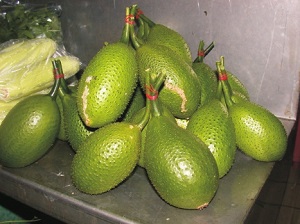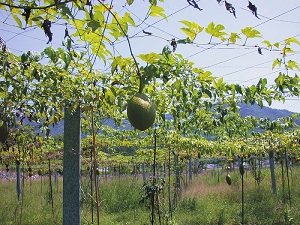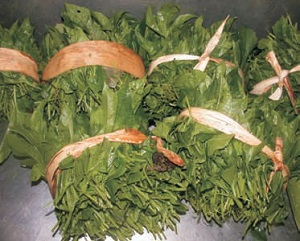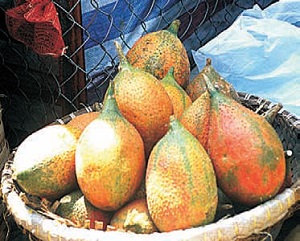Momordica
cochinchinensis
Common
Names: Spiny bitter gourd
Family:
Cucurbitaceae
Common Names
Spiney
bitter gourd, cochinchin gourd, sweet
gourd (En); margoseàpiquants (Fr); pepinoamargoespinoso,
pepinillodeldiablo, cundeamor (Sp); g?c (Vn);木鱉子 (Cn)
Plant
distribution
East, South, and Southeast Asia, Australia
Botanical
Features
Perennial vine, dioecious; stems robust, multiple, angular; leaves
alternate, palmately veined, deeply 5-lobed, serrate, 5-10cm petiole
glandular; flowers axillary, solitary, 8cm accross, yellow; male
flowers with 5-30 mm peduncle bearing sessile bract; female flowers
with smaller bract; fruit round or oblong, 5-10 x 10-15 cm, rind hard,
covered in small spines, green but red or dark orange upon ropening,
fleshy middle part of the fruit wall dark red with six cartilaginous
carpels containing 10-20 seeds; seeds compressed, sculptured, 2.5 x 2 x
0.5 cm, dark brown.
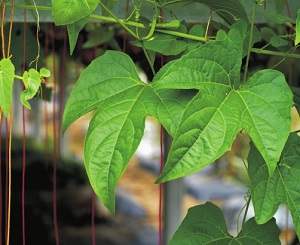 |
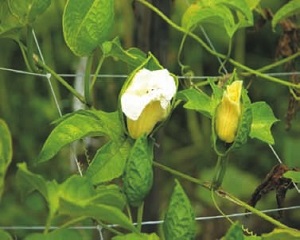 |
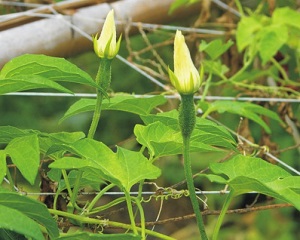 |
 |
Fig. 1
 |
Fig. 2
 |
Fig. 3  |
Fig.
4  |
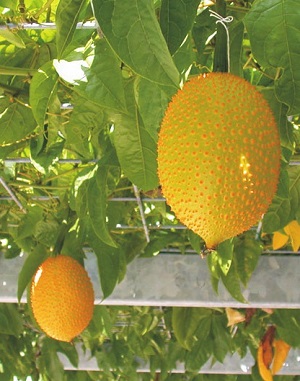 |
 |
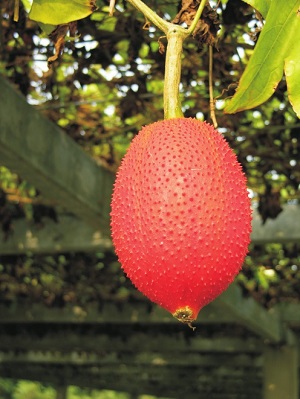 |
 |
Fig. 5  |
Fig.
6  |
Fig.
7  |
Fig.
8  |
Fig. 1. Leaves
Fig. 2. Male flowers
Fig. 3, 4. Female flowers
Fig. 5. Unripe fruit
Fig. 6. Seeds
Fig. 7, 8. Fully ripe fruit
Environmental
Factors
Light requirement: full or partial sun; temperature requirement:
cool-warm; preferred soil type: sandy, loamy, clayey; sensitiveity:
heat, flooding.
Production
Methods
System: gathering wild, home gardening; planting material: preferably
with tuberous roots to maintain proper female/male ratio, seed;
planting method: transplanting; irrigation: moderate; priority
fertilizer: complete fertilizers; crop management: fencing, staking or
latticing when veins reach 1 m, use auxin-type growth regulators on
female plants to produce perthenocarpic fruit when there are no male
plants; planting to 1st harvest; anytime 15 days
after planting for tender shoots, 10-15 days after blooming of femaile
flowers for young fruit with soft spines; harvesting: repeated (fruit
harvested at green or mature stages) in three months; yeild: 30-60
gourds/plant in one season, 1-3 kg each.
Fig. 9. Green
fruit in the market
Fig. 10. Field production for young fruit
Fig. 11. Field production for ripe fruit
Fig. 12. Bundled leaves in the market
Fig. 13. Ripe fruit in the market
Edible Parts
Young leaves and flowers are eaten boiled or stir-fried; young fruit
is boiled or used in soup after peeling rind; mature fruit cooked along
with seeds to flavor and add red color to rice dishes for festive
occasions.
Health Values
Beta-carotene: low in shoots, extremely high in mature fruit; vitamin
E: medium in shoots, high in fruit; folic acid: high in shoots;
ascorbic acid: extremely high in shoots and green fruit; calcium: low
in shoots and green fruit; iron: low in shoots and green fruit;
protein: 3.0% in shoots, 0.9% in green fruit. Fleshy coverings of seeds
are rich in lycopene.
|









